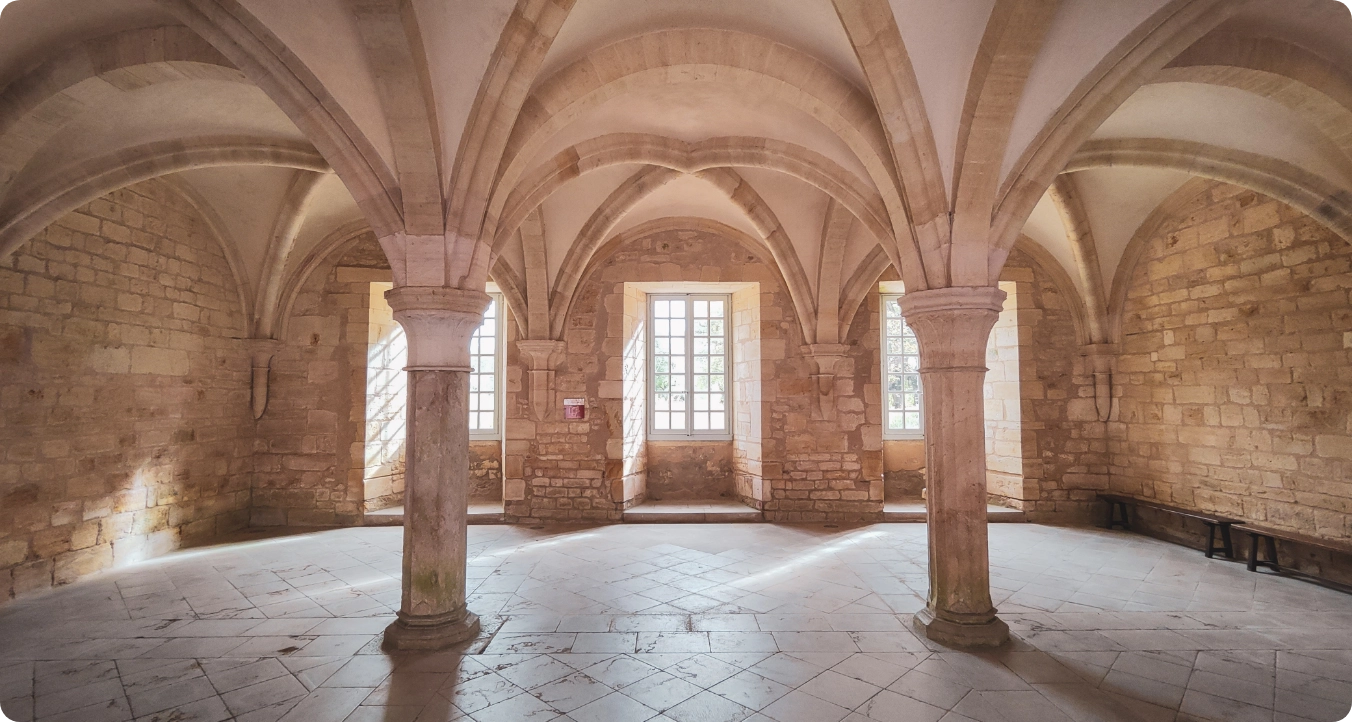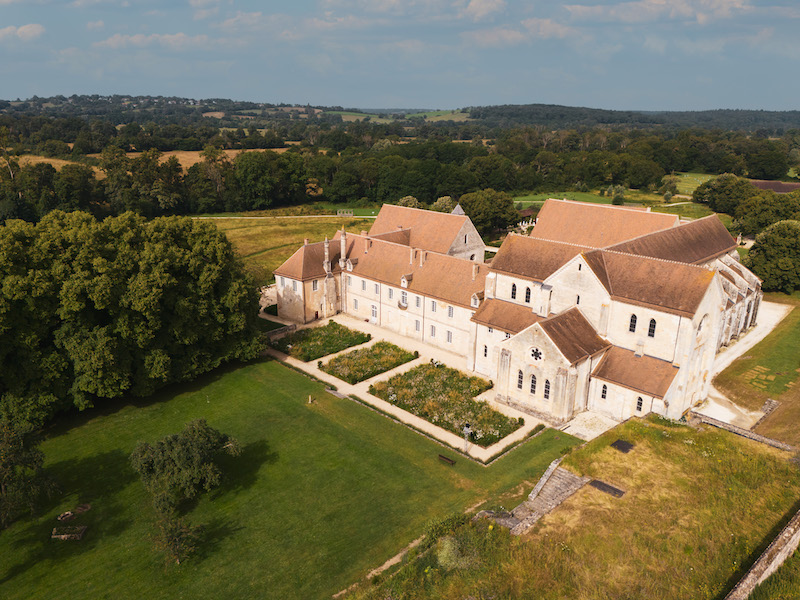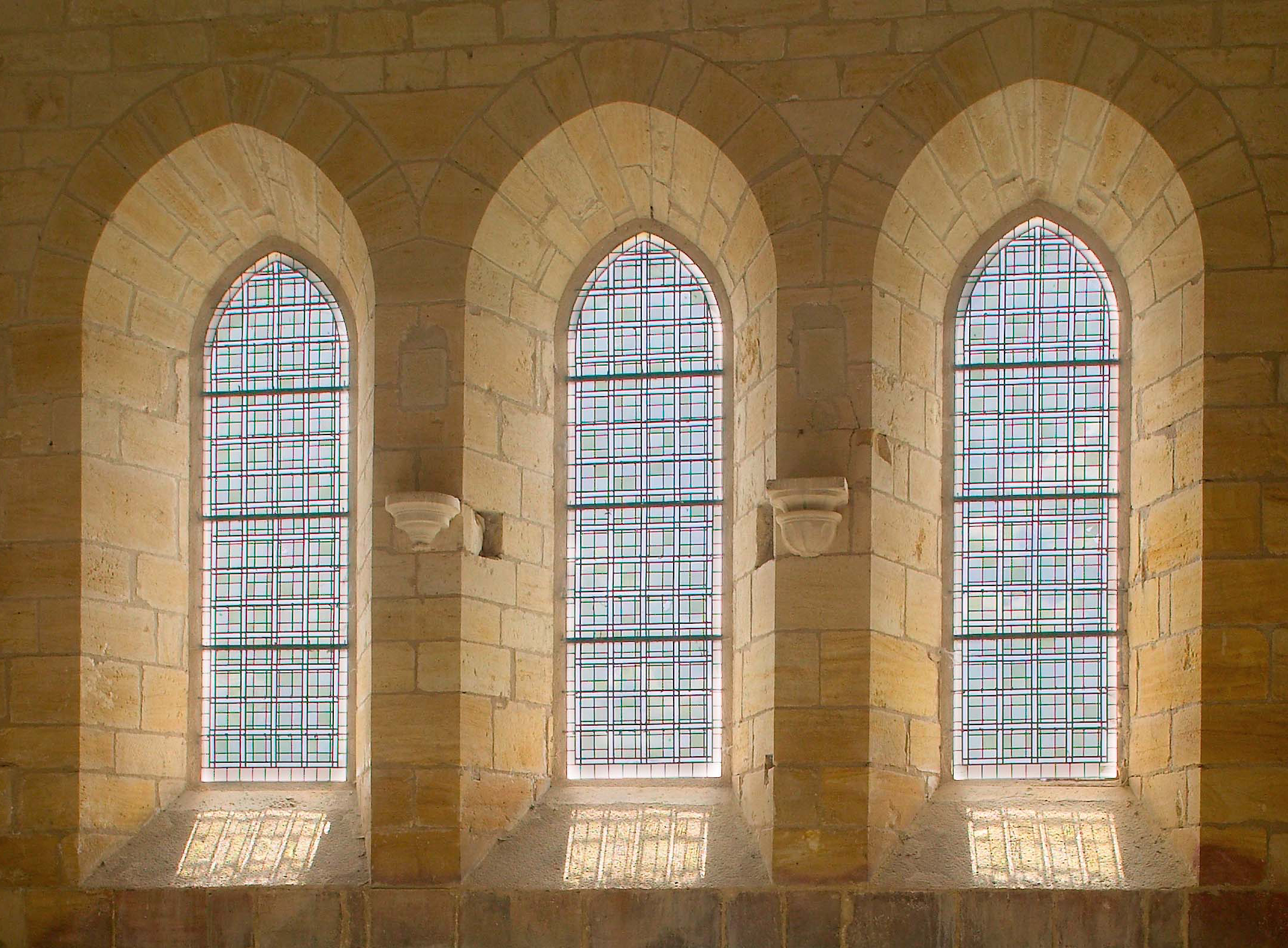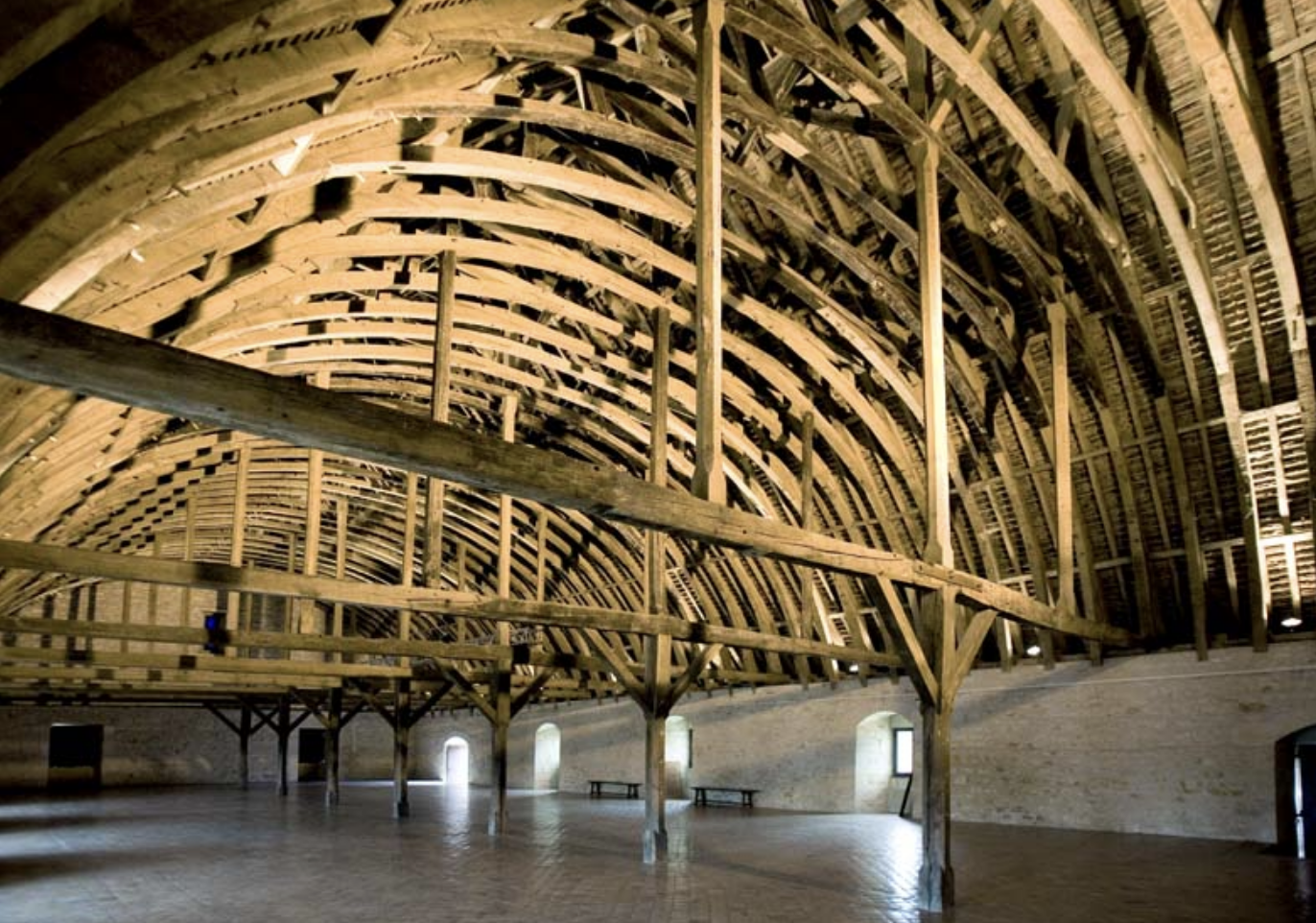Noirlac, a perfect example of a Cistercian foundation
With its sense of stringent purity, Noirlac’s architecture reflects the original aims of the Cistercians and the mystique of the Bernardians. Saint Bernard watched over the foundation of Noirlac: the small group of monks who left Clairvaux in 1136 to found the future Abbey were following Robert, their abbot, himself a very close relative of Saint Bernard. The latter intervened personally with the King in 1149, in order to help the young community.
The choice of a remote location was a continuation of a very ancient tradition - the search for the wilderness - which was dear to the first eastern Christian hermits. The site of Noirlac was, at that time, a marshy thicket, and this matched the requirements of the Cistercian Rule. It was kind of a natural barrier which was soon to be joined by monastery buildings.
True to the typical Cistercian abbey plan, the building strictly separated the community on each side of the cloister. To the east lay the monks’ wing which had a dormitory, chapterhouse and warming room, clearly separated from the more rudimentary residential quarters of the lay brothers, located to the west.
Cistercian asceticism can be seen perfectly in the simplicity of the architectural shapes: the bare nature of the stone, truncated columns, ornaments with no capitals… A whole unit which strongly calls for renouncement.
Noirlac Stained-Glass Windows
Artist Jean-Pierre Raynaud was offered the task of designing the stained-glass windows of the abbey and refectory in 1975. In keeping with the Cistercian ideal of starkness and the rejection of any sort of artifice, the artist was able to bring the Abbey’s bays and rose windows completely back to life.
“The measured light which was into their enclosed retreat had to remain how God had made it, with no embellishment, no finery, splendid in its simple bareness.” Georges Duby
As you move towards the choir of the Abbey church, you will notice that the light becomes more and more intense and gives life to white glass which, loaded with nuances, transforms the monks’ choice of enclosure into a hymn to liberty.








